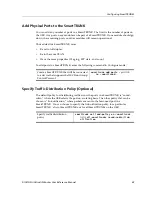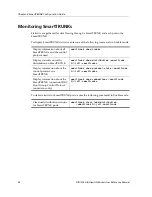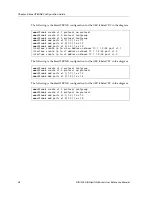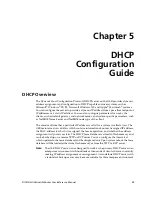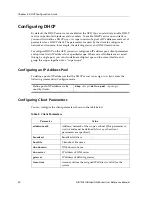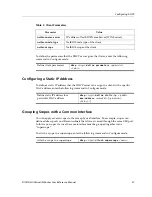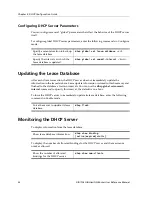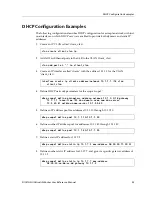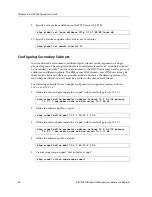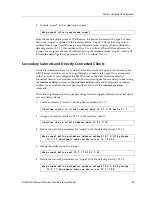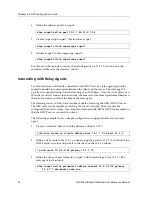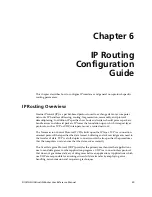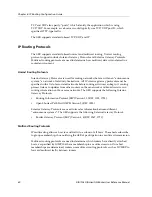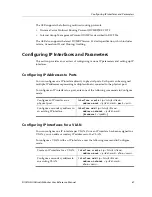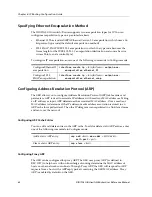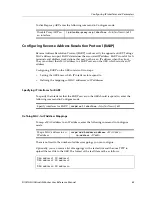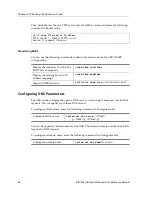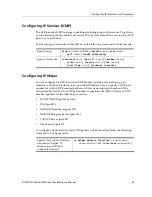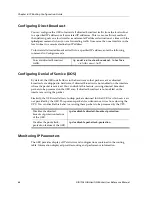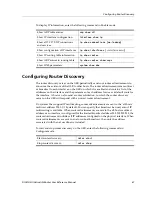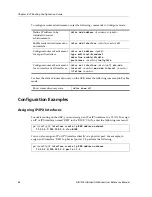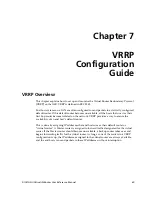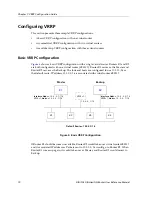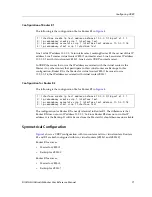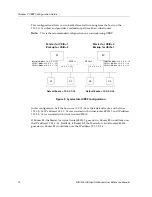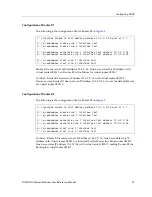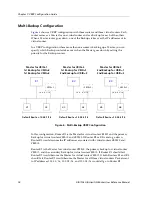
DIGITAL GIGAswitch/Router User Reference Manual
59
Chapter 6
IP Routing
Configuration
Guide
This chapter describes how to configure IP interfaces and general non-protocol-specific
routing parameters.
IP Routing Overview
Internet Protocol (IP) is a packet-based protocol used to exchange data over computer
networks. IP handles addressing, routing, fragmentation, reassembly, and protocol
demultiplexing. In addition, IP specifies how hosts and routers should process packets,
handle errors and discard packets. IP forms the foundation upon which transport layer
protocols, such as TCP or UDP, interoperate over a routed network.
The Transmission Control Protocol (TCP) is built upon the IP layer. TCP is a connection-
oriented protocol that specifies the data format, buffering and acknowledgments used in
the transfer of data. TCP is a full-duplex connection which also specifies the procedures
that the computers use to ensure that the data arrives correctly.
The User Datagram Protocol (UDP) provides the primary mechanism that applications
use to send datagrams to other application programs. UDP is a connectionless protocol
that does not guarantee delivery of datagrams between applications. Applications which
use UDP are responsible for ensuring successful data transfer by employing error
handling, retransmission and sequencing techniques.

